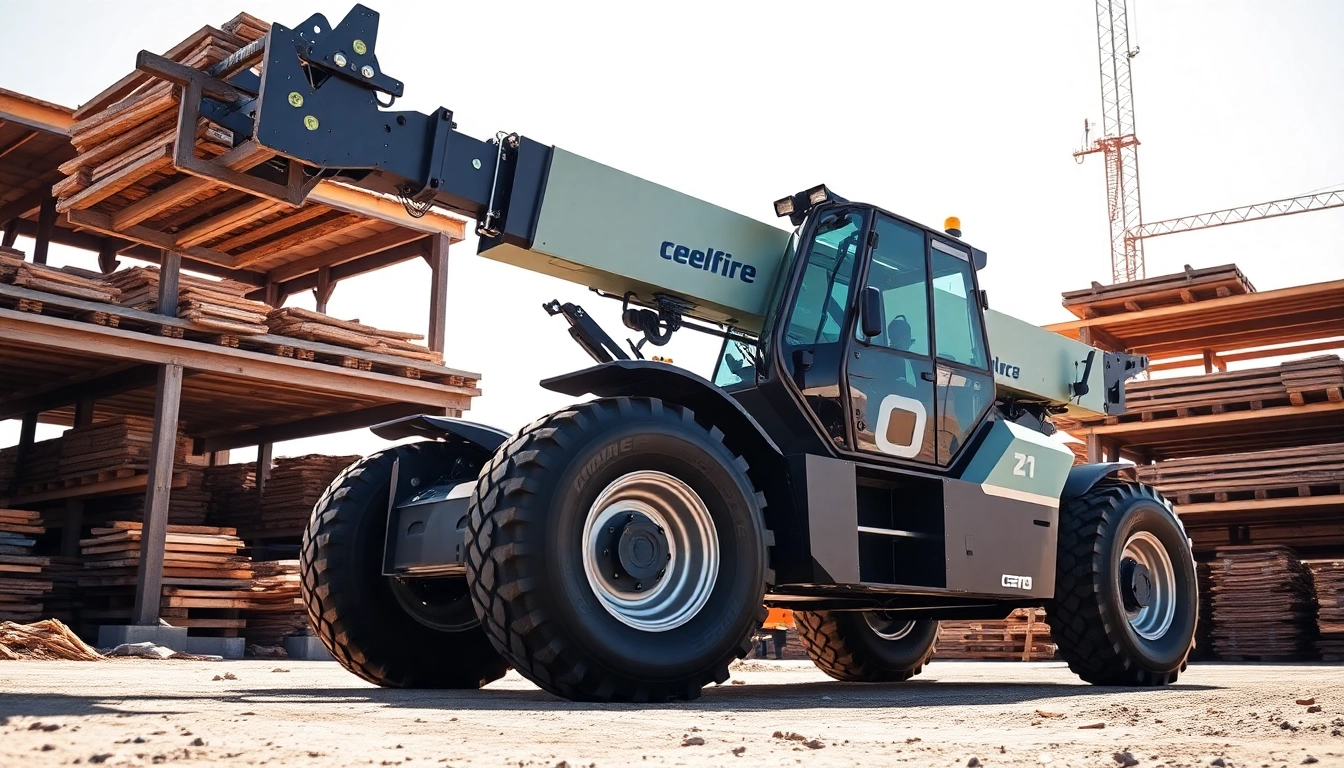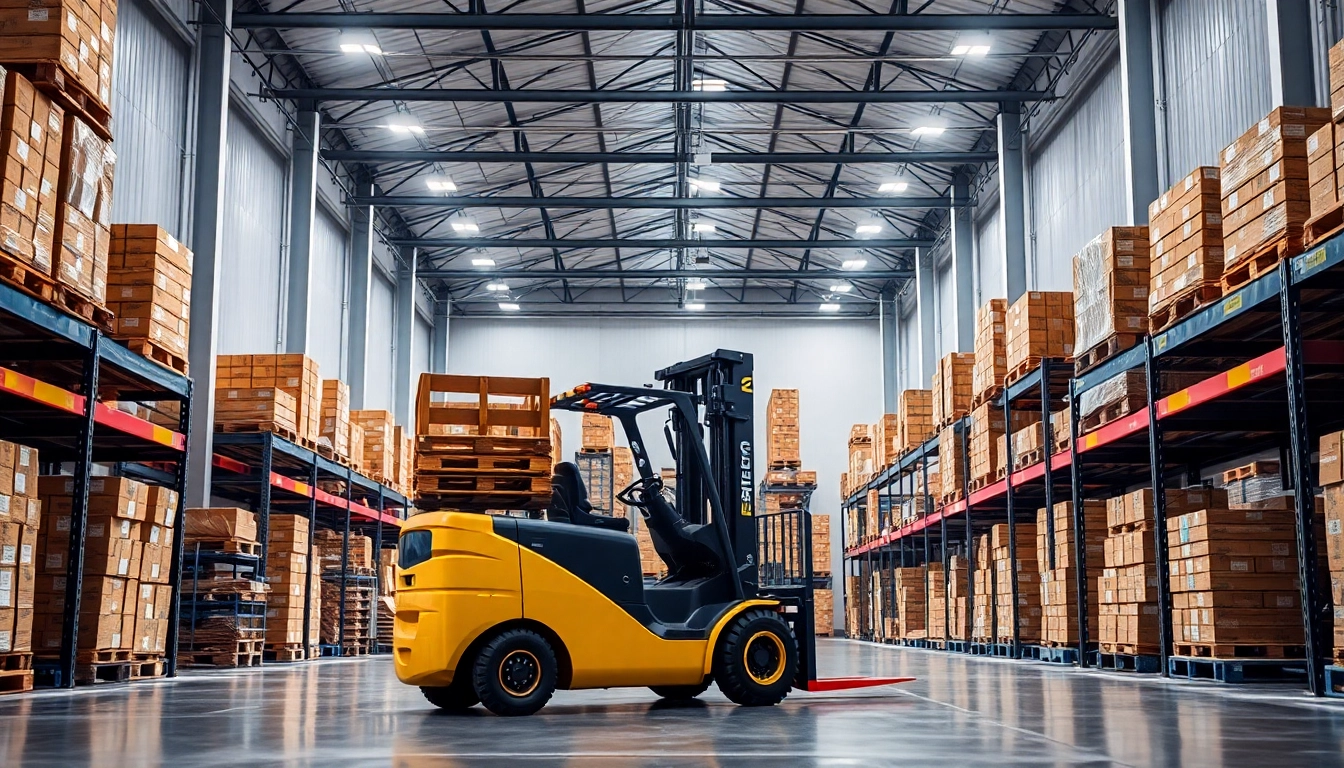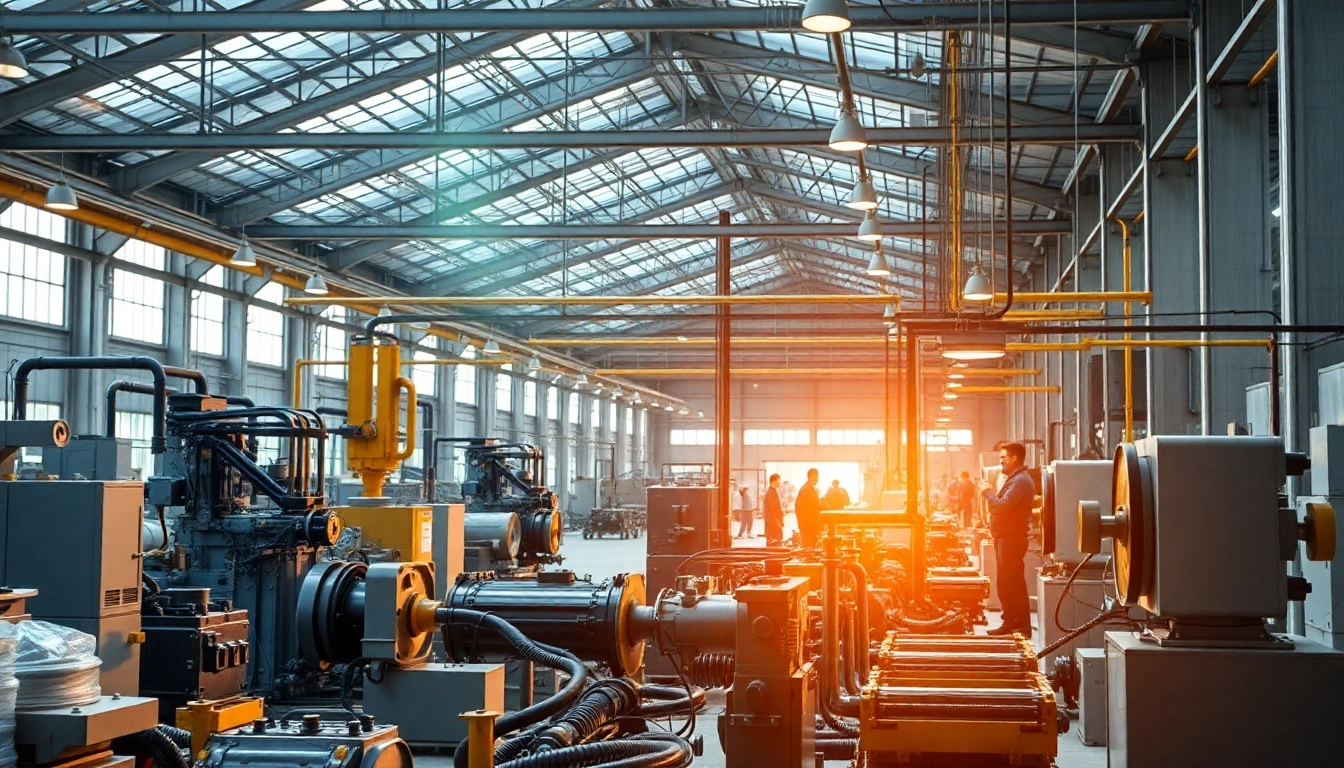Understanding Telehandlers and Their Applications
Telehandlers, also known as telescopic forklifts or boom lifts, are versatile construction equipment integral to many industrial and construction projects. These machines combine the lifting capabilities of a forklift with a telescopic boom, enabling operators to lift, move, and place materials at various heights and distances with exceptional flexibility. For businesses seeking efficient and cost-effective solutions, telehandler rental has become a popular choice due to its flexibility and access to a wide range of models tailored to different project needs. Understanding what telehandlers are and how they function lays the foundation for appreciating their critical role across multiple industries.
What Is a Telehandler and How It Works
A telehandler is a piece of heavy machinery equipped with a telescopic boom that extends forward and upward, allowing for precise material handling in challenging environments. It resembles a forklift but with the added advantage of adjustable reach and height. The core components include a chassis, an extendable boom, a hydraulic system, and various attachments like forks, buckets, or lifting hooks. Telehandlers operate through an engine—typically diesel, electric, or hybrid—that powers hydraulic systems responsible for extending, retracting, and lifting loads.
The operator controls the machine from an enclosed cab, utilizing levers and electronic controls to maneuver the boom and connect to different attachments. The telescopic arm can extend several meters, allowing lifting at heights from 4 meters up to 30 meters depending on the model. The combination of reach and load capacity makes telehandlers invaluable for quickly placing materials at required locations, especially in tight or elevated spaces.
Key Industries Using Telehandlers
Telehandlers are ubiquitous across several sectors due to their adaptability and efficiency:
- Construction: For lifting bricks, steel beams, scaffolding, and other heavy materials to various elevations on building sites.
- Agriculture: For handling bales, feed, and equipment, enabling farmers to operate efficiently across fields and storage areas.
- Warehousing and Logistics: For stacking goods, loading trucks, and managing storage environments with high shelves or tight spaces.
- Industrial Maintenance and Facilities Management: For installing, repairing, and maintaining heavy fixtures at height.
- Mining and Quarries: For moving bulk materials and equipment in rugged conditions.
Advantages of Renting a Telehandler for Projects
Opting for a telehandler rental offers numerous benefits that can significantly enhance project efficiency and cost management:
- Cost Savings: Rental eliminates the high capital expenditure of purchasing equipment, especially for short-term projects.
- Access to Latest Technology: Rental companies often update their fleet, providing access to newer, more efficient models with advanced safety features.
- Flexibility: Renting allows for selecting specific models suited to project demands without long-term commitments.
- Maintenance and Support: Rental providers handle maintenance, repairs, and operational support, minimizing downtime and operational risks.
- Versatility: Rentals often come with various attachments and configurations, making them adaptable to specialized tasks.
These benefits collectively enable construction and industry professionals to focus on project execution while leveraging top-tier equipment without ownership burdens.
Choosing the Right Telehandler for Your Needs
Types and Sizes of Telehandlers Available for Rental
The market offers a broad spectrum of telehandlers tailored to diverse applications, distinguished primarily by their lifting height, load capacity, and size. Compact or mini telehandlers, often weighing under 3 tons and lifting up to 4-6 meters, are ideal for confined spaces and lightweight tasks. Mid-range models extend to 15-20 meters, supporting heavier loads in construction, agriculture, or industrial setups. Heavy-duty telehandlers, reaching 30 meters or more, are designed for large-scale projects requiring significant reach and capacity.
For example, a rental company might stock models like the Wacker Neuson TH412, lifting 4 meters, or the Wacker Neuson 5m model, suitable for specific applications. Selecting the proper size hinges on understanding your project’s scope, terrain, and load requirements.
Factors to Consider: Height, Load Capacity, and Reach
The three primary specifications impact the suitability of a telehandler:
- Maximum Lift Height: Determine the highest point you need to reach. For high-rise construction, models offering 20-30m lift capability are essential, while shorter ranges suffice for ground-level or indoor tasks.
- Load Capacity: Know the heaviest load you’ll handle. Typical telehandlers can accommodate from 1 ton to over 4 tons. Ensuring the machine’s capacity exceeds your heaviest load prevents operational risks.
- Horizontal Reach: The maximum distance the boom can extend forward affects worksite efficiency. For instance, a wider reach allows access to difficult areas but may come with reduced load capacity at maximum extension.
How to Assess Your Project Requirements
Conducting a thorough assessment is key to selecting the optimal telehandler. Consider the following steps:
- Identify Material Types and Weights: Compile a list of materials and their respective weights and dimensions.
- Evaluate Worksite Conditions: Analyze space constraints, ground stability, and access routes.
- Determine Reach and Height Needs: Map out areas requiring lifting, including elevation and horizontal distance.
- Estimate Duration and Volume: Decide on rental periods based on project timelines and volume to optimize costs.
- Consult with Equipment Experts: Leverage rental providers’ expertise for tailored recommendations based on your specific project scope.
Properly assessing these factors ensures the rental equipment precisely matches your operational needs, avoiding overspending or operational constraints.
Optimizing Your Telehandler Rental Experience
Cost-Effective Rental Options and Pricing Strategies
Navigating rental costs involves understanding typical price ranges and exploring strategies to maximize value:
- Duration-based Pricing: Daily, weekly, or monthly rates vary; longer-term rentals often benefit from discounted rates.
- Bulk or Volume Discounts: Renting multiple units or for extended durations can unlock savings.
- Negotiating Terms: Flexibility on delivery, collection, and maintenance clauses can influence overall cost.
- Comparing Local Providers: Prices can differ significantly across rental firms; obtaining multiple quotes ensures competitive rates.
For insight, weekly rental rates in the UK for standard telehandlers often range from £350 to £700, depending on size and features. Awareness of these benchmarks helps budget effectively.
Rental Terms, Delivery, and Flexibility
Clear understanding of rental agreements is essential to avoid surprises:
- Delivery and Collection: Confirm availability and costs associated with transporting equipment to and from the site.
- Duration Flexibility: Opt for providers offering short-term, long-term, or flexible rental periods aligned with your project timeline.
- Operational Support: Check if training, operator support, or maintenance services are included or available separately.
- Insurance and Liability: Clarify coverage requirements and responsibilities for damages or accidents.
Choosing rental firms with flexible terms and reliable logistics can significantly impact project fluidity and budget adherence.
Best Practices for Safe and Efficient Operation
The safety and efficiency of telehandler operation hinge on adherence to best practices:
- Operator Training: Ensure all operators are trained and certified according to industry standards.
- Pre-Operation Checks: Conduct thorough inspections of the machine, including brakes, hydraulics, and controls.
- Load Management: Always adhere to load limits, center loads properly, and avoid sudden movements.
- Site Safety Measures: Mark hazard zones, use clear communication signals, and ensure ground stability.
- Maintenance and Reporting: Report any issues immediately and adhere to scheduled maintenance routines.
Compliance with safety standards not only protects personnel but also minimizes downtime and maintains operational integrity.
Maximizing Productivity with Telehandler Rentals
Integrating Telehandlers into Your Construction Workflow
Effective integration involves planning and coordination:
- Work Planning: Schedule telehandler use during critical phases to optimize productivity.
- Site Layout Adjustment: Position equipment logically to minimize movement and repositioning.
- Attachment Compatibility: Ensure compatible attachments are available and installed properly.
- Communication Protocols: Establish clear signals and procedures among team members for safe operations.
Proper synchronization maximizes the telehandler’s contribution to project timelines and reduces congestion and delays.
Training and Support for Operators
Investing in operator training is crucial. Many rental providers offer comprehensive training sessions covering controls, safety, and emergency procedures. Continuous support and supervision help maintain high safety standards and operational efficiency.
Additionally, some companies provide remote assistance or on-site support, enabling quick resolution of operational issues, thereby reducing downtime.
Measuring ROI and Project Success
To assess the effectiveness of telehandler rental investment:
- Track Time Savings: Measure how much faster materials are delivered and prepared compared to manual methods.
- Evaluate Safety Records: Monitor incident rates and compliance with safety protocols.
- Quantify Cost Savings: Compare rental costs, operational expenses, and the impact on project timelines.
- Review Project Outcomes: Analyze whether the equipment contributed to meeting deadlines and quality standards.
Regular performance reviews ensure continuous improvement and justification of rental decisions.
Future Trends and Innovations in Telehandler Technology
Emerging Features and Safety Enhancements
Advances such as collision avoidance sensors, telematics, and automated stability controls are enhancing safety and operational accuracy. Digital interfaces facilitate real-time data monitoring, enabling proactive maintenance and performance optimization.
Environmental Considerations and Eco-Friendly Models
Manufacturers are increasingly producing electric and hybrid telehandlers that reduce emissions and improve energy efficiency. These eco-friendly options are especially appealing in urban areas and environmentally conscious projects.
Adapting to Industry Changes and New Regulations
As industry standards evolve, telehandler designs incorporate better safety features and conform to stricter environmental regulations. Rental providers that keep pace with these changes provide clients with compliant and future-proof equipment solutions.


